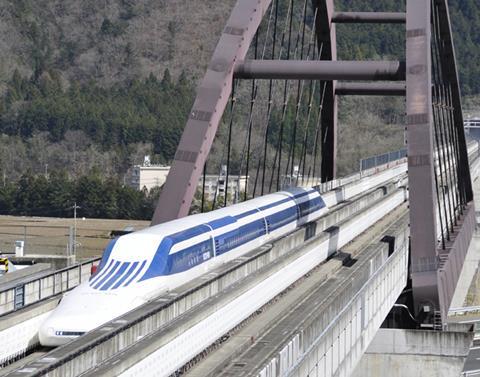
JAPAN: JR Central has unveiled its investment priorities for the 2021-22 financial year, which began on April 1, as it seeks to recalibrate its business for the post-Covid recovery period, when restoring lost ridership will be a key priority.
The total capital investment amounts to ¥722bn, of which no less than ¥430bn is allocated to ongoing work to develop the Chuo Shinkansen superconducting maglev line between Shinagawa and Nagoya. This leaves ¥292bn for other activities.
Rolling stock plans
JR Central says its priority in terms of fleet is to continue the phased introduction of several new builds. These include Series N700S high speed trains on the Tokaido Shinkansen, Series 315 EMUs for suburban services and Series HC 85 diesel-battery hybrid multiple-units for Limited Express services on non-electrified routes.
By the end of March 2022, 13 Series N700S sets are to enter traffic. JR Central expects to have total of 40 sets in operation by the end of March 2024. Accessibility is a key feature of the design, with each trainset being fully step-free and featuring one car with no fewer than six wheelchair spaces, aligned on one side of the aisle, with seats for travel companions on the other side.
The railway anticipates that 56 Series 315 EMU cars will be put in service during the current financial year, with a total of 352 vehicles planned for delivery between the 2021 and 2025 financial years.
The first four-car HC 85 prototype was unveiled on December 12 2019, and a further 64 more are due to be put into service in FY2022-23, subject to the successful completion of a testing programme with the pre-series sets. The units are expected to be deployed on the Hida service between Nagoya, Takayama and Toyama, and the Nanki service between Nagoya and Shingu or Kii-Katsuura.

The hybrid multiple-units have a diesel generator which is connected to a traction controller. The controller feeds the traction motors and the battery. The battery captures regenerated braking energy through the controller. In addition to the anticipated 35% reduction in fossil fuel consumption, JR Central sees other benefits relating to the elimination of a hydraulic transmission system, commonality of components with existing DMUs and lower maintenance costs.
The front end design is intended to minimise damage caused by impacts with large wildlife such as deer. Real time diagnostic monitoring enables vehicle status to be continuously relayed to maintenance depots. Passenger accommodation includes power points installed on all seats, hot and cold water in the WC cubicles, soundproof flooring and CCTV monitoring.
Spending on safety
JR Central plans to spend a further ¥234bn on safety-related interventions. Around 64 km of anti-derailment guards are to be installed this fiscal year. These are fitted on the inside of the running rails on high speed lines to provide additional protection should a train be at risk for derailment during seismic activity for example.
The company also has a major programme of structural refurbishment work underway on the Tokaido Shinkansen; this is valued at ¥136bn in 2019-24, with ¥32bn to be spent in the current financial year. Measures are being taken to ensure the safety of suspended ceilings in the event of seismic activity at 17 stations on the Tokaido Shinkansen and 30 more on the conventional network. Further earthquake resistance measures are to be introduced for platform roofing and on the columns of elevated concrete structures on various 1 067 mm gauge lines.
A further programme of interventions is being ramped up across the network to address the threat of extreme weather incidents caused by climate change. Some areas served by JR Central are low-lying, and could be prone to extensive flooding during typhoons. Between FY2020 and FY2024, the railway plans to raise the height of structures on the Tokaido Shinkansen housing signalling and power supply equipment, and to install watertight doors to protect lineside cabinets.

Other safety initiatives covered by the FY2021 spending plans include the further roll-out of large platform screen doors as well as the installation of lifts to improve step-free access at more stations and the provision of accessible toilet facilities.
Rethinking ticketing
As part of its efforts to restore ridership lost during the pandemic, JR Central is planning to revamp its online ticketing activity. This will largely be focused on enhancing and increasing use of Smart EX, an online reservation service for the Tokaido and Sanyo Shinkansens. Reservations can be changed for a later date for free of charge.
JR Central is currently introducing an Express Reservation programme, under which passengers can book reserved seats on Tokaido and Sanyo Shinkansen services at discounted prices, for a membership fee of ¥1 100.
The spending plans also cover investment in non-rail activities, including the promotion of JR Central’s retail facilities at shopping malls owned by the railway. These include the JR Central Towers and JR Gate Tower, both adjacent to Nagoya station, where improvements worth ¥29bn are envisaged.

















